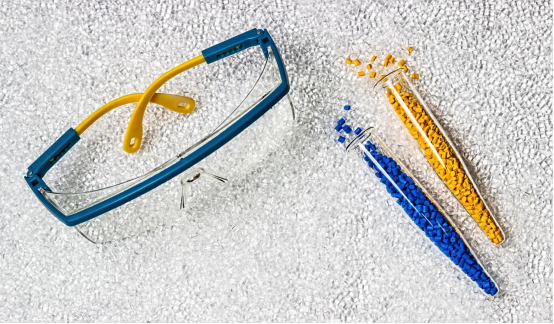Address:Room 906, building 6, SIIC Center, No.195 Hong Kong East Road, Laoshan District, Qingdao city, Shandong Province, China
E-mail:info@deltachem.net

ØWhy does photo aging occur in plastics?
When plastics are exposed to sunlight for a long time, the strong UV rays of various bands will produce different degrees of damage to the bonds of polymer materials. From the aspect of polymer internal structure, the main reason for light aging is due to the existence of polymer materials easy to form the excited state of the unstable structure, unsaturated double bonds, branched chains, carbonyl and end hydroxyl, etc.. While the absorbed photon energy is higher than the polymer bond energy, these functional groups will be excited to produce free radicals and hydroperoxides, which in turn triggers the chain degradation reaction. Macroscopically, it will be shown as the appearance of the discoloration, surface cracking, loss of luster and loose of the mechanical properties of the material.
Thus the key to solving the problem of UV aging is to choose the right UV absorber to protect the plastic from sensitive wavelengths!

Table1 Sensitive wavelength of common polymers
ØUV resistance solutions for several common plastics
Generally, Benzotriazole UV absorbers will be the cost-effective option for those common plastics.
² Polyolefin and Olefin copolymer
Polyolefin contains weak double bonds and defects. When catalyzed by high temperature, light, O3, or metal ions, these weak bonds are easy to be breakthrough and start chain reactions, which damage the molecular structure of polyolefin.
OMNISTAB UV 234 has a high absorbance in the 300-400 nm range, which effectively covers the sensitive wavelengths of Polyolefins. What’s more, UV 234 has low volatility and high resistance to thermal degradation in olefin compounding and molding processes. It is particularly suitable for high surface applications such as polyolefin films and fibers.
² PC and PET
OMNISTAB UV329 and UV360 are suitable for polymers with high transparency requests thanks to their low impact on the original properties of materials (e.g., transparency, plasticity, etc.). And UV360 has a larger molecular structure that provides better processing stability and better temperature resistance.
Both products are widely used in thermoplastic polyesters, polycarbonate and nylons. Such as:
① Optical lenses of polycarbonate.
② PET fiber and PET bottle.
③ PC/PA automobile interior and exterior parts.
² PVC
The PVC molecular chain has strong polarity, that lead to higher processing temperature and it’s necessary to add plasticizers to reduce the intermolecular gravitational force and get better flexibility. However, PVC materials will easily shed HCl under heat, oxygen and light, which will continuously trigger the decomposition, and products will occur brittle, discoloration and loss of mechanical properties.
To maintain the quality of acidic resins, plastic modification is very necessary, and the most direct way is to add UV absorbers and stabilizers to resin system.
OMNISTAB UV326 is a benzotriazole UV absorber suitable for polar and acidic resin systems. And when it used together with antioxidants (hindered phenols, phosphites) and low alkaline HALS (e.g., OMNISTAB LS119), you will got excellent synergistic effect. Its recommended dosage is 0.3-1.0%.
For more information about the use of above UV absorbers, please consult us or visit our official website. Looking forward to your inquiry!